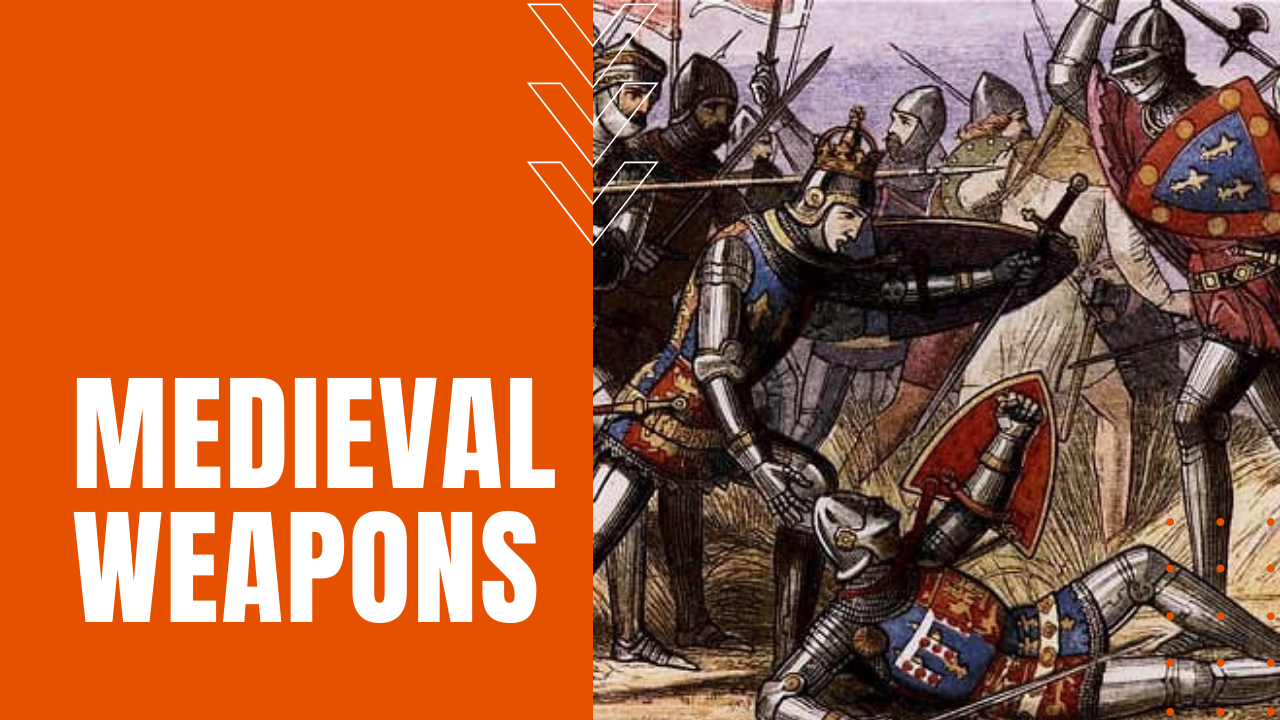Medieval Weapons of the Middle Ages

While most people envision armor-clad knights when the topic of medieval Europe comes up—charging opponents on horseback with a lance tucked under one arm, in truth, medieval warriors generally thrashed their opponents with a dizzying array of brutal instruments, and while most of these weapons failed to pierce metal armor, many relied on blunt force trauma to incapacitate an enemy combatant.
Swords and Skull Crushing Axes, Maces, and War Picks
Although the sword became the most popular weapon in the Middle Ages, due to its low cost and and potential user sophistication, which allowed expert swordsmen the advantage of skill over brute force, more often than not, warring kings equipped their armies with low cost axes and mace, which caused horrific, skull-bashing injuries to unlucky opponents.
Crossbows and longbows allowed archers to inflict heavy damage to enemy forces from greater distances, and while some selective weapons were used to incapacitate rather than to kill opposing combatants—mainly for the taking of high status prisoners for ransom or political leverage—daggers, on the other hand, were used exclusively for murder. Medieval warfare was mostly decided by siege, which made the trebuchet or catapult the ultimate weapon of choice against castles and defensive fortifications, allowing invaders to repeatedly hurl rocks at a single point of a defensive wall, until the attackers could hammer through and gain access to the unlucky opponents within.
The Trebuchet and Gunpowder
The arrival of the counterweight trebuchet in the 13th century increased their hurling power significantly, making even great castles instantly vulnerable. In July of 1304, the garrison at Stirling Castle surrendered to Edward the First rather than face Warwolf, Edward’s massive counterweight trebuchet.
Medieval warfare changed dramatically during the 14th and 15th centuries, when Europeans embraced the Chinese-inspired creation of gunpowder. The advent of handguns, muskets and cannons allowed rulers to field large armies with limited training, vastly expanding the scope and decisiveness of warfare, which ultimately brought castles and indeed the medieval way of fighting to an abrupt and definitive end.
